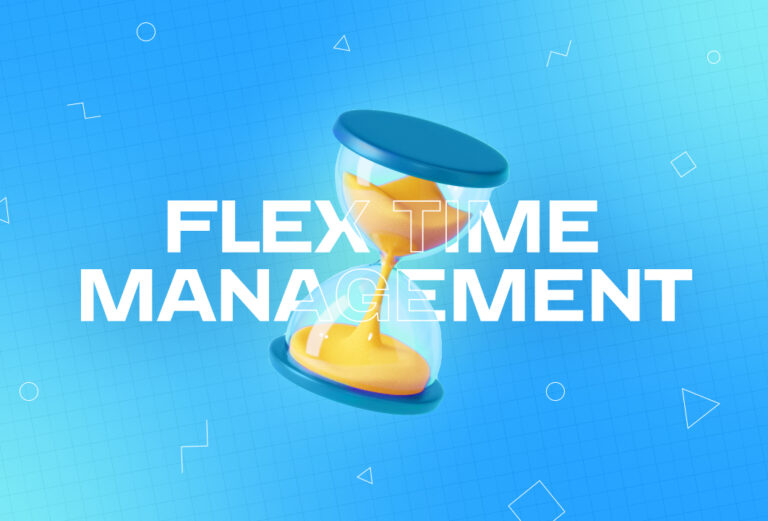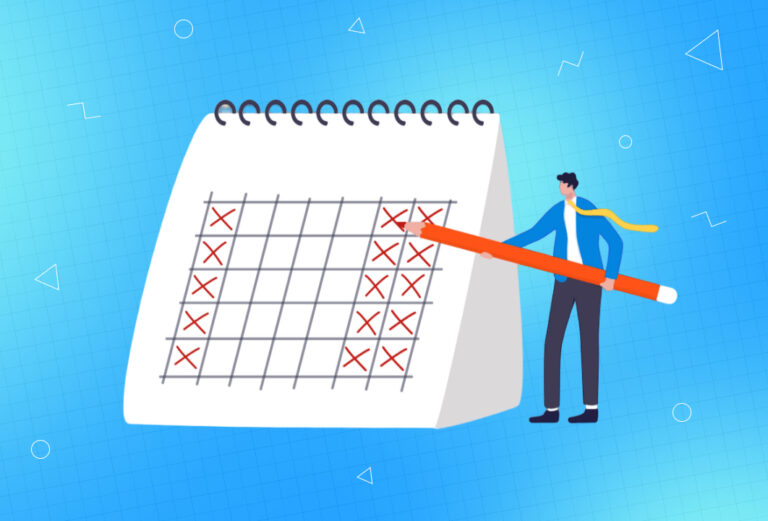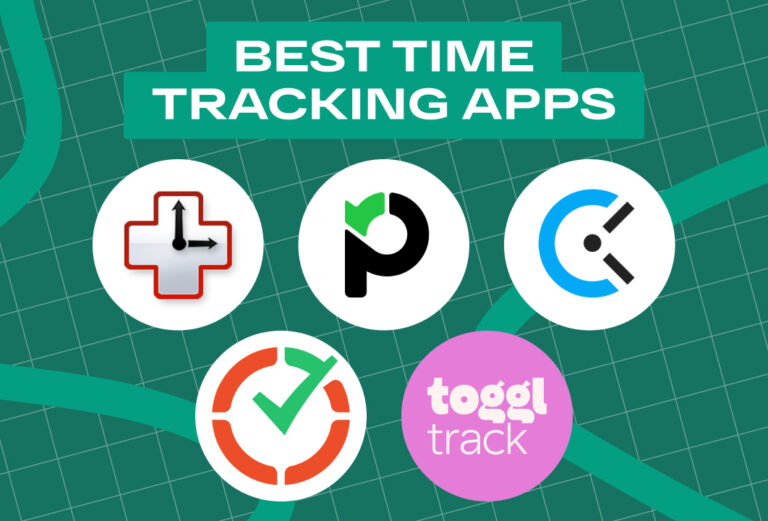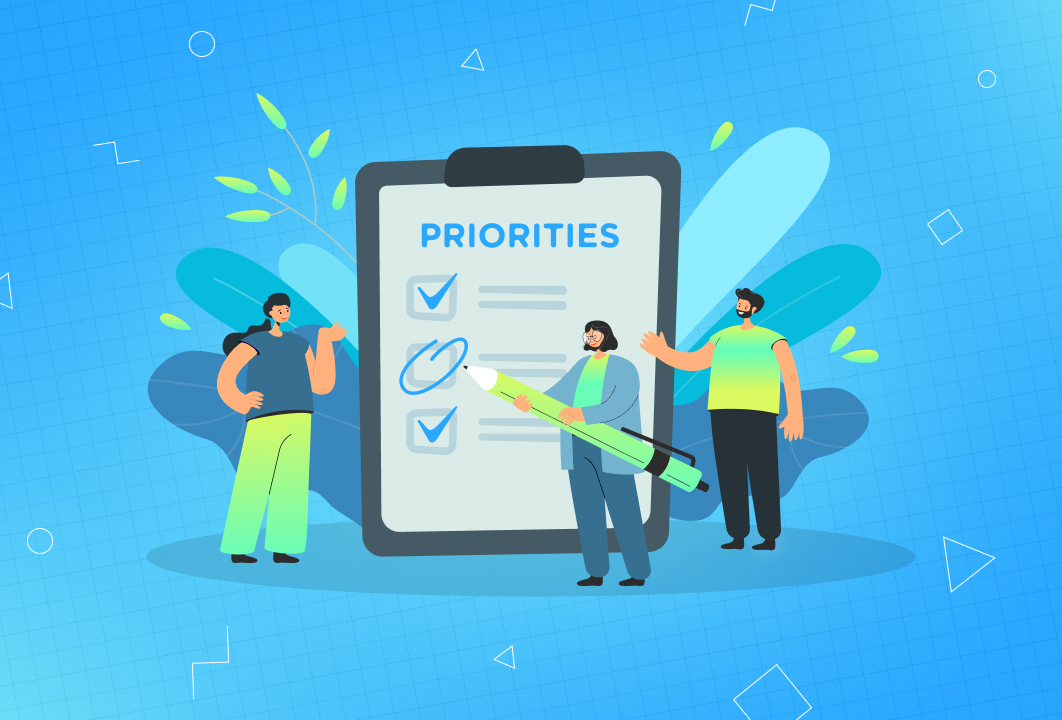
Are you tired of feeling overwhelmed by your to-do list? Do you struggle with deciding which tasks to focus on first? If so, you’re not alone. Prioritization is a common struggle for many individuals, teams, and organizations. However, mastering the art of prioritization can be a game-changer. In this guide, we will explore what prioritization is, why it’s important, and how to implement various prioritization frameworks and tools.
What is prioritization meaning?
Prioritization is the act of organizing tasks, activities, or goals in order of importance or urgency. It involves making tough decisions about what to focus on, based on factors such as customer value, the effort required, and available resources. Prioritization is not just about making a list and checking off tasks one by one. It’s about making intentional choices that align with your goals and values.
Why is Prioritization Important?
Prioritization is crucial because it helps you achieve your goals more efficiently and effectively. Without prioritization, you may waste time and resources on tasks that are not high-value or urgent, which can lead to missed opportunities and burnout. Prioritization also helps you manage limited resources, whether that’s time, money, or personnel. By focusing on high-value tasks, you can maximize your resources and achieve more with less.
How to Prioritize: Prioritization frameworks
There are many prioritization frameworks and tools available, each with its own strengths and weaknesses. Some of the most popular prioritization frameworks include the Eisenhower Matrix, the MoSCoW method, and the Kano model. These frameworks vary in complexity and focus, but all aim to help you make better decisions about what to prioritize.
Eisenhower Matrix

The Eisenhower Matrix, also known as the Urgent-Important Matrix, is a simple and effective way to prioritize tasks based on their urgency and importance. The matrix consists of four quadrants:
Quadrant 1 (Urgent and Important): Tasks that require immediate action and are critical to achieving your goals.
Quadrant 2 (Important but Not Urgent): Tasks that are important but not time-sensitive, such as long-term planning or personal development.
Quadrant 3 (Urgent but Not Important): Urgent tasks that do not contribute to your long-term goals, such as interruptions or minor tasks.
Quadrant 4 (Not Urgent and Not Important): Tasks that are neither urgent nor important, such as time-wasting activities.
By categorizing your tasks into these quadrants, you can prioritize based on what is most important and urgent, while also avoiding distractions and time-wasting activities.
MoSCoW Method
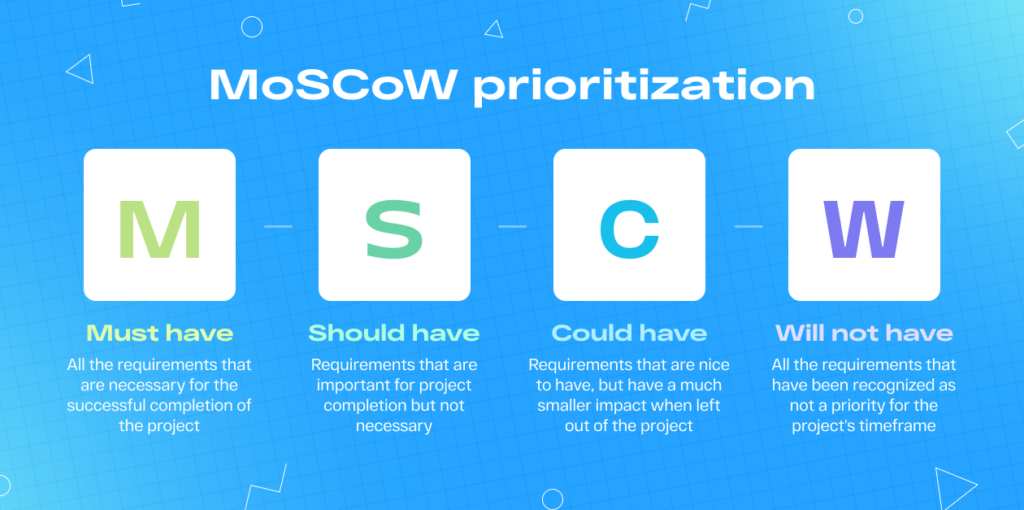
The MoSCoW method is a prioritization framework that is commonly used in Agile development. It stands for Must have, Should have, Could have, and Won’t have. The framework helps teams prioritize features and requirements based on their importance to the product or project.
Must have: Features or requirements that are critical to the success of the product or project.
Should have: Features or requirements that are important but not critical to the success of the product or project.
Could have: Features or requirements that would be nice to have but are not essential.
Won’t have: Features or requirements that are not necessary for the success of the product or project.
The MoSCoW method helps teams make informed decisions about what features or requirements to prioritize based on their impact on the product or project.
Kano Model
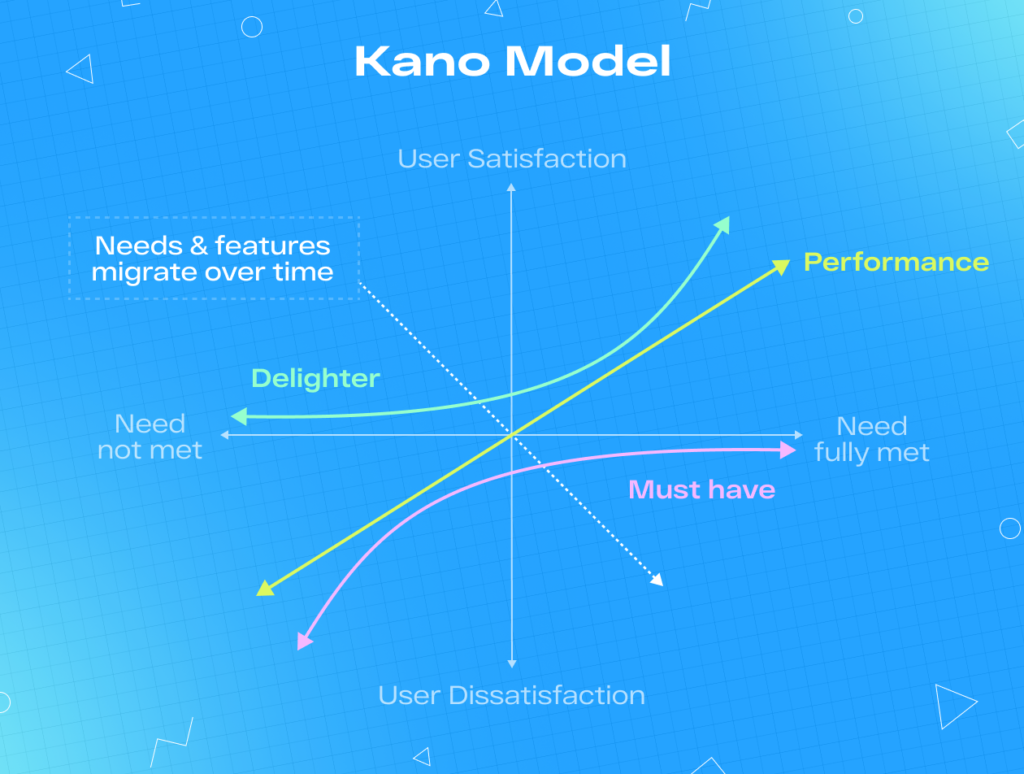
The Kano model is a customer-centric prioritization framework that helps organizations prioritize features or requirements based on their impact on customer satisfaction. The model categorizes features into three categories:
Must-haves: Features that customers expect as a baseline requirement for a product or service. These features do not necessarily increase customer satisfaction, but their absence will lead to dissatisfaction.
Performance features: Features that directly contribute to customer satisfaction. These features are usually quantifiable and can be measured on a scale from basic to excellent.
Delighters: Features that go above and beyond customer expectations, leading to surprise and delight. These features are not necessary for customer satisfaction but can increase loyalty and advocacy.
The Kano model helps organizations prioritize features based on their impact on customer satisfaction and differentiate their products or services from competitors.
Action Priority Matrix

The Action Priority Matrix is a prioritization tool that helps individuals or teams categorize tasks based on their level of effort and impact. The matrix consists of four quadrants:
Quadrant 1 (High Impact, Low Effort): Tasks that will have a significant impact but require little effort.
Quadrant 2 (High Impact, High Effort): Tasks that will have a significant impact but require a significant effort.
Quadrant 3 (Low Impact, Low Effort): Tasks that have little impact and require little effort.
Quadrant 4 (Low Impact, High Effort): Tasks that have little impact but require a significant effort.
By categorizing tasks into these quadrants, you can prioritize tasks based on their impact and the effort required to complete them. This can help you focus on high-impact tasks that require minimal effort while delegating or eliminating low-impact tasks that require significant effort.
Prioritization in Practice: How to choose prioritization framework
One of the challenges of prioritization is selecting the right framework to use. With so many prioritization frameworks available, it can be difficult to know which one is right for your product or organization. In this chapter, we will explore how to select the right prioritization framework for your product.
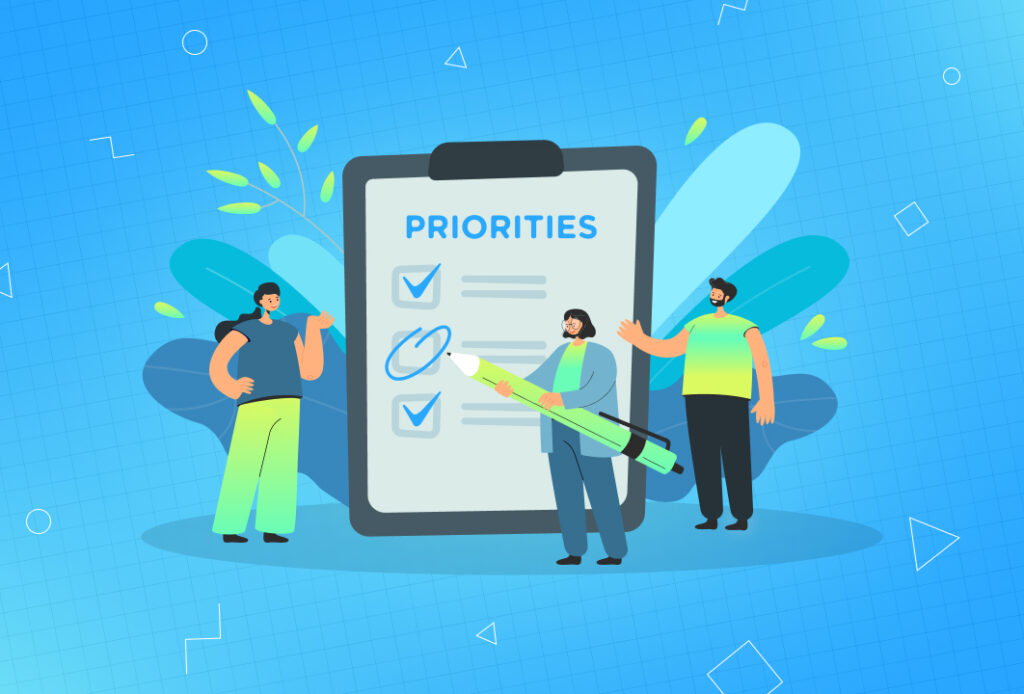
1. Consider Your Goals and Values
The first step in selecting a prioritization framework is to consider your goals and values. What are you trying to achieve, and what is most important to you? Different prioritization frameworks prioritize different factors, such as customer value, the effort required, or available resources. Consider which factors are most important to you and select a framework that aligns with your goals and values.
2. Evaluate Your Product or Service
The next step is to evaluate your product or service. What are its unique features, strengths, and weaknesses? What are your customers’ needs and pain points? Different prioritization frameworks prioritize different aspects of a product or service, such as customer value, performance features, or must-have requirements. Evaluate your product or service and select a framework that prioritizes the most critical aspects for your customers.
3. Review the Most Popular Prioritization Frameworks
There are many prioritization frameworks available, but some are more popular than others. Reviewing the most popular prioritization frameworks can give you a sense of what is working for other organizations and industries. Some of the most popular prioritization frameworks include the prioritization matrix, the Kano model, and the MoSCoW method. These frameworks prioritize different factors, such as customer value, the effort required, or product requirements. Consider the strengths and weaknesses of each framework and select one that aligns with your goals and values.
4. Assess Your Prioritization Process
Assessing your current prioritization process can help you identify areas for improvement and select a new framework. How do you currently prioritize tasks or features? What are the strengths and weaknesses of your current process? Do you involve stakeholders in the prioritization process? Assessing your current process can help you identify gaps and opportunities for improvement.
5. Determine Your Prioritization Needs
Different products or services may require different prioritization frameworks. For example, a software product may prioritize performance features or bug fixes, while a service-based product may prioritize customer satisfaction and experience. Consider your specific prioritization needs and select a framework that addresses those needs.
6. Consider the Task Prioritization Level
Some prioritization frameworks are better suited for high-level prioritization, while others are better suited for task-level prioritization. For example, the prioritization matrix is often used for high-level prioritization, while task prioritization tools such as Trello or Asana are better suited for task-level prioritization. Consider the level of prioritization you need and select a framework that addresses that level.
7. Evaluate the Functional and Dysfunctional Answers
When evaluating different prioritization frameworks, it is important to consider both the functional and dysfunctional answers they may produce. Functional answers are those that prioritize high-value tasks or features that align with your goals and values, while dysfunctional answers are those that prioritize low-value tasks or features that do not align with your goals and values. Some prioritization frameworks may be more prone to producing dysfunctional answers than others. Consider the potential for both functional and dysfunctional answers and select a framework that minimizes the risk of dysfunctional answers.
FAQ
What are the 3 key components of prioritizing?
The three key components to prioritizing are determining the level of importance or urgency, evaluating the effort or resources required, and considering the potential impact or value. By considering these factors, individuals or teams can make informed decisions about what tasks or features to prioritize.
What are prioritization skills?
Prioritization skills refer to the ability to effectively organize tasks or features in order of importance or urgency. This involves assessing and evaluating the potential impact or value of different tasks or features, as well as considering the effort or resources required to complete them. Individuals or teams with strong prioritization skills can make better decisions about what tasks or features to focus on, maximizing their resources and achieving their goals more efficiently.
What are the 4 levels of prioritizing tasks?
The four levels of prioritizing tasks are:
Urgent and Important: Tasks that require immediate action and are critical to achieving your goals.
Important but Not Urgent: Tasks that are important but not time-sensitive, such as long-term planning or personal development.
Urgent but Not Important: Urgent tasks that do not contribute to your long-term goals, such as interruptions or minor tasks.
Not Urgent and Not Important: Tasks that are neither urgent nor important, such as time-wasting activities.
These levels can be used to categorize tasks and prioritize based on what is most important and urgent, while also avoiding distractions and time-wasting activities.
Conclusion
Prioritization is a critical skill for achieving your goals and maximizing your resources. By using prioritization frameworks and tools, defining your goals and values, breaking down your tasks, using data and customer feedback, collaborating and communicating, and using prioritization tools, you can prioritize more effectively and achieve more with less. Whether you’re a product manager, team leader, or individual contributor, prioritization can help you achieve success and avoid burnout. So start prioritizing today, and take the first step towards achieving your goals.



